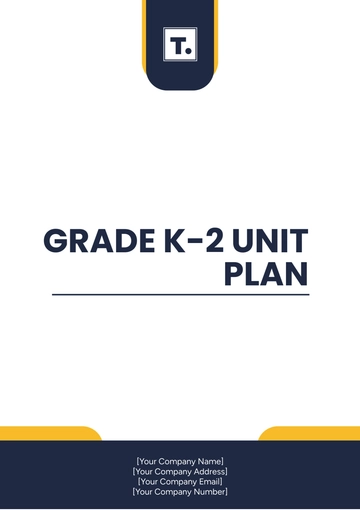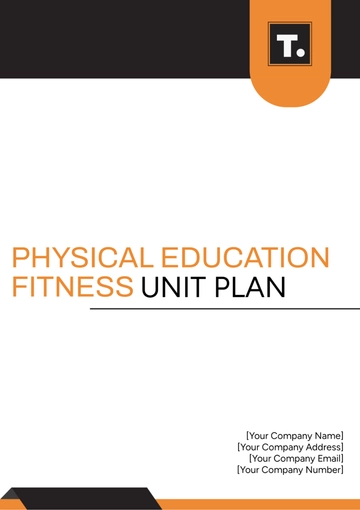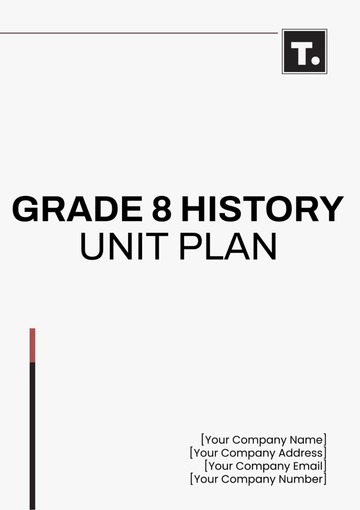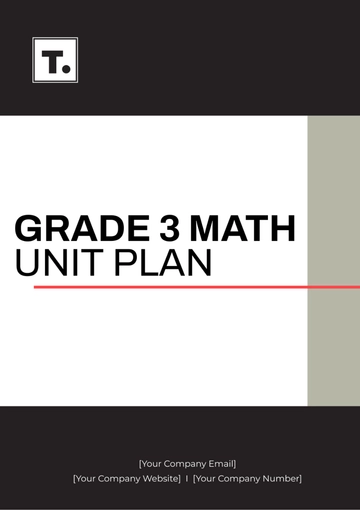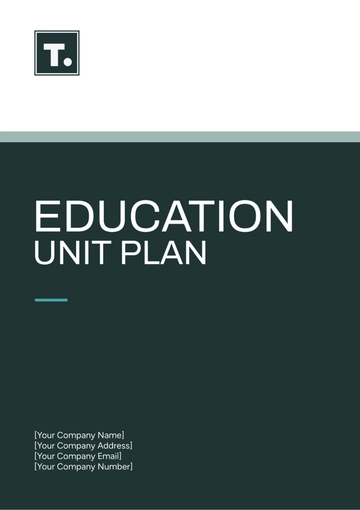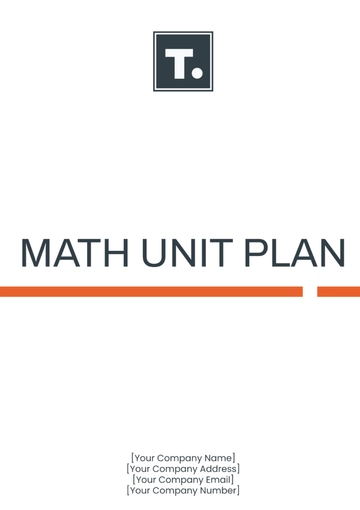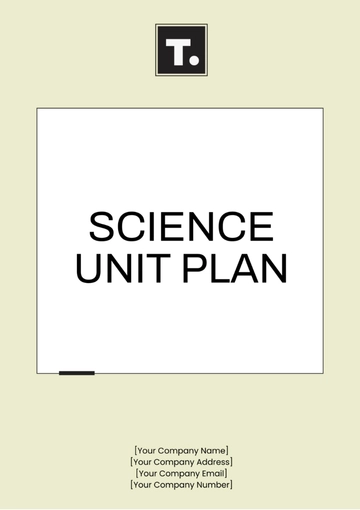Free Physical Education Unit Plan

Prepared by: [Your Name]
Date: [Date]
I. Unit Overview
The "Introduction to Team Sports" unit is designed to provide students with a comprehensive introduction to various team sports, focusing on teamwork, sportsmanship, and fundamental skills development. Throughout this unit, students will engage in a series of structured activities, drills, and games aimed at enhancing their understanding of team dynamics, communication strategies, and tactical decision-making. Moreover, the unit emphasizes the importance of physical fitness, coordination, and cardiovascular endurance through active participation in sports activities.
II. Learning Objectives
Understanding Rules and Objectives: By the end of the unit, students should be able to demonstrate an understanding of the basic rules and objectives of popular team sports such as basketball, soccer, and volleyball.
Skill Development: Students will develop fundamental skills essential for team sports, including passing, dribbling, shooting, and teamwork.
Sportsmanship and Respect: Emphasis will be placed on fostering good sportsmanship, respect for teammates, opponents, and officials.
Strategic Thinking: Students will learn to apply strategic thinking, decision-making skills, and adaptability in various game situations.
Physical Fitness Improvement: The unit aims to improve students' physical fitness levels, agility, coordination, and cardiovascular endurance through active participation in sports activities.
III. Instructional Strategies
Skill Stations: Organize skill stations where students rotate through different stations focusing on specific skills such as passing, shooting, defense, and ball control. Each station will include drills, demonstrations, and feedback sessions.
Small-Sided Games: Facilitate small-sided games to allow students to apply their learned skills in a game-like setting. These games promote teamwork, cooperation, and an understanding of game rules.
Game Analysis: Use video analysis tools to review and analyze gameplay. Discuss strategies, tactics, strengths, weaknesses, and areas for improvement with students.
Team Building Activities: Incorporate team-building exercises such as trust falls, problem-solving challenges, and communication activities to enhance cohesion and collaboration among students.
Guest Speakers: Invite guest speakers such as professional athletes, coaches, or sports psychologists to share insights, experiences, and motivational talks related to team sports and sportsmanship.
IV. Assessment and Evaluation
Skills Assessments: Conduct regular skill assessments to track individual progress, identify strengths and areas for improvement, and tailor instruction accordingly.
Game Performance Evaluation: Evaluate student performance during games based on teamwork, sportsmanship, skill execution, and strategic decision-making.
Written Assignments: Assign reflective essays or journals where students analyze their experiences, challenges, successes, and personal growth throughout the unit.
Peer and Self-Assessment: Encourage peer and self-assessment activities to promote student reflection, goal setting, and accountability.
V. Differentiation
Provide modified activities, equipment adaptations, or alternative assignments to accommodate students with diverse abilities, learning styles, and needs.
Offer additional challenges, advanced drills, or leadership opportunities for students seeking further skill development and mastery.
VI. Resources and Materials
Ensure access to appropriate sports equipment (balls, cones, goals/nets, etc.) for each team sport being covered in the unit.
Provide printed rulebooks, diagrams, and instructional materials to support student learning and understanding of game rules and strategies.
Utilize video recording equipment or software for game analysis, feedback sessions, and skill demonstrations.
Develop assessment rubrics, checklists, and feedback forms to ensure consistent evaluation and feedback on student progress and performance.
VII. Safety Guidelines
Review and reinforce safety protocols specific to each team sport, including proper warm-up techniques, equipment usage, hydration, and injury prevention measures.
Provide first aid supplies, emergency action plans, and access to trained personnel in case of any injuries or incidents during physical activities.
VIII. Reflection and Feedback
Facilitate regular reflection sessions where students discuss their experiences, challenges, successes, and lessons learned in team sports.
Use student feedback surveys, interviews, or focus groups to gather input on instructional strategies, activities, unit organization, and overall satisfaction.
Collaborate with colleagues, parents, and administrators to review student progress, outcomes, and unit effectiveness. Incorporate feedback and make necessary adjustments for continuous improvement.
- 100% Customizable, free editor
- Access 1 Million+ Templates, photo’s & graphics
- Download or share as a template
- Click and replace photos, graphics, text, backgrounds
- Resize, crop, AI write & more
- Access advanced editor
Organize your PE curriculum with Template.net's Physical Education Unit Plan Template. This editable and customizable tool helps you outline objectives, activities, and assessments. Create detailed and structured plans. Editable in our AI Editor Tool, this template ensures comprehensive and professional unit planning, supporting effective physical education delivery.
You may also like
- Finance Plan
- Construction Plan
- Sales Plan
- Development Plan
- Career Plan
- Budget Plan
- HR Plan
- Education Plan
- Transition Plan
- Work Plan
- Training Plan
- Communication Plan
- Operation Plan
- Health And Safety Plan
- Strategy Plan
- Professional Development Plan
- Advertising Plan
- Risk Management Plan
- Restaurant Plan
- School Plan
- Nursing Home Patient Care Plan
- Nursing Care Plan
- Plan Event
- Startup Plan
- Social Media Plan
- Staffing Plan
- Annual Plan
- Content Plan
- Payment Plan
- Implementation Plan
- Hotel Plan
- Workout Plan
- Accounting Plan
- Campaign Plan
- Essay Plan
- 30 60 90 Day Plan
- Research Plan
- Recruitment Plan
- 90 Day Plan
- Quarterly Plan
- Emergency Plan
- 5 Year Plan
- Gym Plan
- Personal Plan
- IT and Software Plan
- Treatment Plan
- Real Estate Plan
- Law Firm Plan
- Healthcare Plan
- Improvement Plan
- Media Plan
- 5 Year Business Plan
- Learning Plan
- Marketing Campaign Plan
- Travel Agency Plan
- Cleaning Services Plan
- Interior Design Plan
- Performance Plan
- PR Plan
- Birth Plan
- Life Plan
- SEO Plan
- Disaster Recovery Plan
- Continuity Plan
- Launch Plan
- Legal Plan
- Behavior Plan
- Performance Improvement Plan
- Salon Plan
- Security Plan
- Security Management Plan
- Employee Development Plan
- Quality Plan
- Service Improvement Plan
- Growth Plan
- Incident Response Plan
- Basketball Plan
- Emergency Action Plan
- Product Launch Plan
- Spa Plan
- Employee Training Plan
- Data Analysis Plan
- Employee Action Plan
- Territory Plan
- Audit Plan
- Classroom Plan
- Activity Plan
- Parenting Plan
- Care Plan
- Project Execution Plan
- Exercise Plan
- Internship Plan
- Software Development Plan
- Continuous Improvement Plan
- Leave Plan
- 90 Day Sales Plan
- Advertising Agency Plan
- Employee Transition Plan
- Smart Action Plan
- Workplace Safety Plan
- Behavior Change Plan
- Contingency Plan
- Continuity of Operations Plan
- Health Plan
- Quality Control Plan
- Self Plan
- Sports Development Plan
- Change Management Plan
- Ecommerce Plan
- Personal Financial Plan
- Process Improvement Plan
- 30-60-90 Day Sales Plan
- Crisis Management Plan
- Engagement Plan
- Execution Plan
- Pandemic Plan
- Quality Assurance Plan
- Service Continuity Plan
- Agile Project Plan
- Fundraising Plan
- Job Transition Plan
- Asset Maintenance Plan
- Maintenance Plan
- Software Test Plan
- Staff Training and Development Plan
- 3 Year Plan
- Brand Activation Plan
- Release Plan
- Resource Plan
- Risk Mitigation Plan
- Teacher Plan
- 30 60 90 Day Plan for New Manager
- Food Safety Plan
- Food Truck Plan
- Hiring Plan
- Quality Management Plan
- Wellness Plan
- Behavior Intervention Plan
- Bonus Plan
- Investment Plan
- Maternity Leave Plan
- Pandemic Response Plan
- Succession Planning
- Coaching Plan
- Configuration Management Plan
- Remote Work Plan
- Self Care Plan
- Teaching Plan
- 100-Day Plan
- HACCP Plan
- Student Plan
- Sustainability Plan
- 30 60 90 Day Plan for Interview
- Access Plan
- Site Specific Safety Plan













